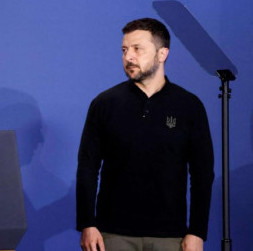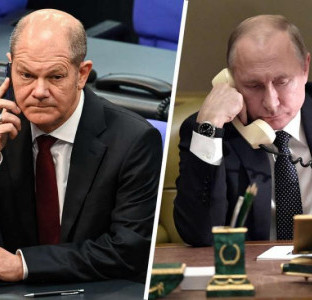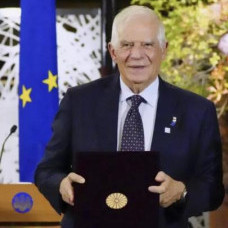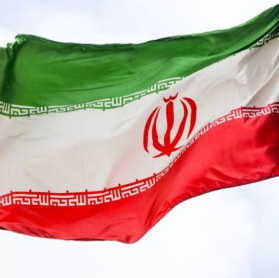
Russian President Vladimir Putin’s visit to China in the second half of October as invited by his counterpart Xi Jinping has turned out rich and productive, though not yielding any earth-shattering news. In Beijing, Vladimir Putin took part in the 3rd International Belt and Road Forum, speaking at its opening ceremony on October 18, and also held talks with Xi Jinping. The two leaders came up with a number of statements on enhancing strategic partnership, fixing high trade turnover figures and dynamics.
Traditionally, special emphasis was placed on energy cooperation progress and prospects between Moscow and Beijing — industry events were held to coincide with Vladimir Putin's visit. October 19 witnessed the 5th Russian-Chinese Energy Business Forum (RCEBF) sponsored by both the Presidential Commission for Strategic Development of the Fuel and Energy Sector, and Environmental Security and China’s State Energy Administration (NEC); with its co-organizers being PJSC Rosneft, China National Petroleum Corporation (CNPC), and the 3rd Round Table on Energy Industry Cooperation organized by CNPC as part of the 3rd Belt and Road Forum for International Cooperation.
At RCEBF, Rosneft CEO Igor Sechin announced major progress in Russian oil supplies — this year alone saw over 75 million tons delivered to China (+25% as compared to last year's level). He clarified that the eight months of 2023 made Russia the key oil supplier to China, outperforming Saudi Arabia. And the General Customs Administration of China published industry statistics for nine months already: in January to September, the Russian Federation is leading the way in terms of oil supplies to China — nearly 80 million tons (a precise 79.937 million tons, +24.4% YoY).
In turn, Gazprom CEO Alexey Miller, speaking at a round table on energy cooperation, noted that growth prospects in natural gas consumption are mainly related to Asia, with "the main driving force behind this growth being China with its dynamic and fast-growing economy."
Alexey Miller stressed that "the company has the required resources, technologies and competencies to assist China as regards the provision of its growing economy with a reliable and efficient source of clean energy, i.e. natural gas. Gazprom and CNPC are already working in this direction together."
He recalled that nearest future will see the Power of Siberia reach its full capacity of 38 billion cubic meters per year (after 2024), turning Gazprom into the largest supplier of gas to China.
In 2022, Gazprom and CNPC also signed a long-term contract along the Far Eastern route for the supply of an annual 10 billion cubic meters of gas, with its infrastructure currently being designed.
Gazprom is the one to supply liquefied natural gas (LNG) to China from Sakhalin and the Baltic Sea Portovaya complex. The giant’s new option of LNG deliveries via the Northern Sea Route has recently proven its efficiency, Miller said, stressing that its use significantly reduces delivery time to countries of the Asia-Pacific region (APR).
Gazprom and CNPC have been long discussing another project — pipeline gas exports to China via Mongolia. On October 19, Alexey Miller had a working meeting with CNPC Board Chairman Dai Houliang to inform about project design work dynamics for the Soyuz Vostok project in Mongolia to become continuation of the promising Power of Siberia 2 gas pipeline.
During the meeting, Gazprom and CNPC signed an addendum to Sales and Purchase Agreement along the Eastern Route (the Power of Siberia) for additional volumes of Russian gas to China until the end of 2023.
"The talks on all issues of cooperation in the gas sector were very fruitful and meaningful. This year the growth of gas supplies via the Power of Siberia has already reached 46.6% compared with the same period last year. Gazprom is ready to continue boosting supplies and reliably provide Chinese partners with natural gas on routes agreed," Miller said.
Still, a contract was expected for the Power of Siberia 2, stipulating for the supply of another 50 billion cubic meters of gas annually. Gazprom deems this vital because of curtailed business in Europe. But everything was limited to the fact that under the Power of Siberia contract, more gas will be supplied until the year-end as per the formalized addendum.
PRC’s agreement delay remains an open question. Apparently, Beijing is pressuring Russia with an alternative scenario of a likely fourth line (D) construction of the Turkmenistan-China gas pipeline, demanding a contract base price reduction and a beneficial formula. Therefore, contract signing with Gazprom has been postponed for the time being.
The new gas pipeline should not be solely regarded in Russia’s export terms. The Power of Siberia 2 system is relevant in view of domestic market development plans (including the regional gasification program), and expansion of domestic gas processing capacities. Commercial aspects are another pair of shoes — the forecast pipeline system investment in truly significant. The estimated payback period of such a capital-intensive project is going to be vital here, which may elongate over possible conjunctural "fluctuations" in the global gas market. In general, there are no direct barriers in the territory of Russia to develop gas transportation infrastructure within the Forces of Siberia 2 route, rather incentives.









